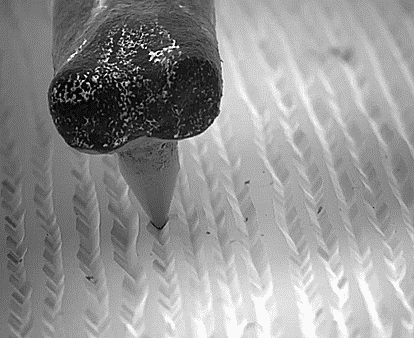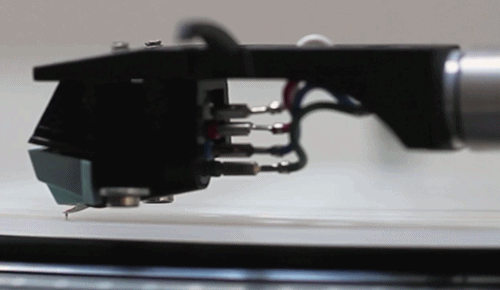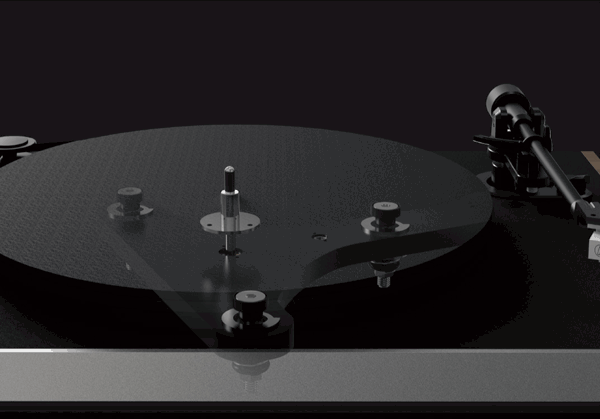The Turntable System

Introduction: The Turntable as a System
Modern Objective Approach to Vinyl Playback
Introduction: Science Over Tradition
The ultimate fidelity and musical truth on vinyl arise from the rigorous application of contemporary science, not from accident, tradition, or cost alone. Precision instruments, detailed measurement, and shared expertise empower every turntable owner to achieve best-possible results. This approach places historical methodologies in context, debunking long-held myths and revealing where legacy ideas still have value.
The Turntable as a Precision System
A turntable is an integrated system of mechanical, electrical, and acoustic subsystems. Unlike closed-box digital players—which handle conversion and playback internally—the turntable’s performance hinges on the interactions between:
-
Plinth
-
Bearing
-
Platter
-
Tonearm
-
Cartridge
-
Phono pre-amp circuitry
Each element contributes measurable nuance. Listeners gain direct agency over variables, inviting a tactile, highly customizable engagement with music reproduction.
Key Engineering Principles
Vibration Control & Isolation
Preserving transient detail demands minimizing unwanted resonances. Designers achieve this with:
-
Constrained-layer damping in plinths and platters
-
Specialized isolation feet to block airborne and floor-borne disturbances
-
Tonearm interfaces tension-matched to minimize secondary resonances
Materials & Design Influences
Modern turntable design leverages advances from aerospace, medical imaging, and precision instrumentation:
-
Aerospace-grade aluminum and carbon fiber arm tubes for optimal strength-to-weight ratios
-
Constrained-layer laminates borrowed from medical platforms for superior damping
-
Magnetic bearings and negative-stiffness suspension for ultra-stable rotation
-
Finite-element-optimized chassis geometries to control resonance paths
Cartridge and Tonearm Synergy
Achieving the ideal groove-to-electron transfer requires matching cartridge compliance to tonearm effective mass. Key factors include:
-
Resonance frequency alignment to avoid tracking errors
-
Precise cartridge alignment, azimuth, and vertical tracking angle (VTA) adjustments
-
Optimal tracking force and anti-skate settings to balance contact and minimize wear
-
High-quality phono cables and grounding to preserve signal integrity
Choosing the Right Turntable
Selecting a turntable is both personal and technical. Follow these steps:
-
Define your listening goals
-
Warmth and richness versus ultra-clean precision
-
-
Determine upgrade path
-
Modular tonearms, swap-out cartridges, and upgradeable platters
-
-
Balance practical factors
-
Budget, space, and future add-ons
-
-
Seek a platform built for growth
-
A chassis that accepts damping accessories and arm upgrades
-
Integrating Historical Methods
Historical practices often contained valuable insights but also perpetuated myths. A modern objective approach:
-
Retains proven techniques (e.g., manual leveling, basic damping)
-
Debunks unfounded claims (e.g., expensive exotic materials without measurement data)
-
Encourages evidence-based selection over tradition
Conclusion
By embracing a modern, objective methodology, vinyl playback becomes a science-driven endeavor rather than a matter of chance, tradition, or expense. Precision instruments, nanometer-scale calibration, and detailed measurement empower every turntable owner to optimize each subsystem—plinth, bearing, platter, tonearm, cartridge, and phono pre-amp circuitry—and extract the purest musical truth from their records. Shared expertise and advanced engineering solutions make cutting-edge practices accessible, turning turntables into highly tunable instruments of sonic fidelity.
This approach also reframes historical techniques: retaining those with empirical backing, expanding them through contemporary insights, and debunking myths rooted in anecdote rather than data. By grounding decisions in rigorous measurement and cross-disciplinary engineering, enthusiasts unlock the full musical potential of vinyl, ensuring that every nuance in the groove is faithfully reproduced.


Vibration Control of Unwanted Plinth Vibrations
Vibration Propagation and Turntable Performance:
When the stylus is tracking the record groove it is an intricate process, one that is deeply sensitive to vibrations. The stylus reads the microscopic contours of the groove, converting these physical undulations into electrical signals.
These signals are then amplified to produce sound, capturing the nuances and subtleties of the original recording. This ability to extract fine details makes vinyl playback cherished among audiophiles. However, this sensitivity also means that the stylus is highly susceptible to unwanted vibrations, which can significantly affect sound quality.
The vibrations created by the stylus when tracking the record create vibrations within the turntable these vibrations are easily heard without amplifier or speakers turned on, and those very same vibrations adversely impact the vibrations of the stylus while tracking the groove.
As the stylus moves through the groove, it inevitably generates its own vibrations. These vibrations travel through the vinyl record causing the record itself to resonate. The platter, which supports the vinyl, then picks up these vibrations, and if not properly damped, transmits them throughout the rest of the turntable structure. This creates a feedback loop where vibrations generated by the stylus are reflected back, affecting its performance and introducing distortions.
Ironically, the very vibrations that allow the stylus to produce such detailed sound also make it vulnerable to these adverse effects. The vibrations can travel from the stylus to the tonearm, arm-board, and plinth (the base of the turntable), each potentially adding its own resonance and further complicating the playback. These reflections and resonances create a delayed reflection, causing the stylus to pick up extraneous noise that interferes with the original signal, creating a smearing of sorts to the sound, an ever so slightly out of focus leading edge to the sound.
Therefore, controlling these vibrations through effective damping and isolation techniques is crucial. The choice of materials used in the construction of the platter, plinth, and the arm-board, as well as additional vibration isolation accessories, all play significant roles in minimising these unwanted resonances. By carefully managing these vibrations, the integrity of the audio signal can be preserved, ensuring that the playback remains true to the original recording and free from distortion.
Additionally the external vibrations both airborne and mechanical from the speakers, creating vibrations of the floor and equipment rack, even you walking across the room, each step you take is picked up by the stylus. The stylus is very sensitive to vibration, and it's that sensitivity that makes it so good at bringing out nuances from a record groove.
Turntable design has evolved significantly over the years, incorporating cutting-edge technologies and engineering principles from various advanced fields. Extraordinary design and engineering concepts traditionally used in aeronautical, medical, and scientific disciplines have been adapted to create some of the world's best turntables, pushing the boundaries of vinyl playback performance.
In the aeronautical industry, the emphasis on precision engineering and material science has inspired turntable manufacturers to utilise high-performance materials like carbon fiber and aerospace-grade aluminum. These materials offer exceptional strength-to-weight ratios, minimising resonance and ensuring accurate sound reproduction. The precision machining techniques used in aeronautics have also been applied to turntable components, enhancing the overall build quality and reliability of the systems.
Medical engineering, known for its focus on reducing vibrations and ensuring stability, has contributed techniques such as constrained-layer damping and vibration isolation. These methods are crucial in medical devices to maintain accuracy and functionality, and when applied to turntables, they effectively minimise unwanted vibrations that can distort audio signals. This results in a clearer and more faithful reproduction of the original recording.
Scientific fields, particularly those involved in instrumentation and measurement, have influenced the development of advanced tonearm designs and bearing mechanisms. For example, the use of magnetic bearings, which provide frictionless movement, and negative stiffness suspension systems, which isolate the platter from external vibrations, are concepts borrowed from scientific instrumentation. These innovations ensure that the stylus tracks the record groove with unparalleled precision, reducing tracking errors and enhancing sound quality.
Overall, the integration of these advanced technologies and engineering practices from aeronautical, medical, and scientific fields has propelled turntable design to new heights. By leveraging these sophisticated techniques, modern turntables are capable of delivering exceptional audio fidelity, allowing audiophiles to experience vinyl playback with unprecedented clarity and detail. This cross-disciplinary approach not only showcases the versatility of engineering solutions but also highlights the continuous pursuit of perfection in the world of high-fidelity audio.



The Turntable Duo: Cartridge and Tonearm
Cartridge Compliance and Tone Arm Effective Mass
A turntable’s sonic signature hinges on the dynamic partnership of two integral components: the cartridge and the tonearm. Their interaction—defined by cartridge compliance and tonearm effective mass—dictates resonance behavior, bass definition, and immunity to rumble or warp artifacts. Understanding and tuning this relationship is crucial for unlocking the full musical potential of vinyl playback.
Cartridge Compliance: The Spring of Sound
Cartridge compliance describes how readily the stylus assembly moves under force.
-
High-compliance cartridges behave like soft springs, requiring lower mass arms to hit the optimal resonance.
-
Low-compliance cartridges are stiffer and pair best with higher mass arms to avoid overly bright, “tubby” bass.
Matching compliance to arm mass ensures the stylus tracks grooves without undue vibration or harshness.
Tonearm Effective Mass: The Inertia Factor
Effective mass is the tonearm’s resistance to acceleration, encompassing the arm tube, headshell, and cartridge.
-
Low-mass arms excel with high-compliance cartridges, yielding resonances in the musical sweet spot.
-
High-mass arms stabilize low-compliance cartridges, taming resonance peaks that can color the midrange.
Balancing mass and compliance prevents the system’s natural resonance from intruding into the audible band.
Resonance and Its Reverberations
The combined system resonates at:
fres=12πM×Cf_\text{res} = \frac{1}{2\pi \sqrt{M \times C}}
-
MM: effective mass (kg)
-
CC: dynamic compliance (m/N)
Aim for a resonance between 9 Hz and 11 Hz. Below this, turntable rumble and warps amplify. Above it, bass becomes loose, and musical energy may excite the peak, causing mistracking.
Compliance–Mass Matching: A Quick Reference
Cartridge Compliance (µm/mN) Tonearm Effective Mass (g)Expected Resonance (Hz)
8–12 (High)4–8 (Low)9–11
12–20 (Med-High)8–129–11
20–30 (Medium)12–189–11
30–40 (Low-Med)18–249–11
>40 (Low)>249–11
TRACE Tonearm Resonance & Arm-Cartridge Evaluator “Mapping the path to ideal resonance.”
TRACE
Tonearm Resonance & Arm-Cartridge Evaluator “Mapping the path to ideal resonance.”
Selecting the perfect cartridge and tonearm pairing is part science, part art—and all about resonance. Every cartridge’s compliance (its “springiness”) must harmonize with your tonearm’s effective mass to avoid troublesome peaks or gaps in the audio band. When that delicate balance is off, the result can be muddy mids, loose bass, or even record skipping. TRACE transforms this intricate calculation from guesswork into clarity.
TRACE scans and analyzes compliance specs from leading manufacturers, factors in your tonearm’s mass and geometry, and then visualizes the combined resonance curve. In seconds, you’ll see whether your setup falls into the sweet spot—typically 9–11 Hz—or risks rumble below 8 Hz or boomy peaks above 14 Hz. No more trial-and-error swapping of cartridges or headshells: TRACE guides you straight to the ideal resonance zone.
With its intuitive interface, interactive graphs, and confidence indicators, TRACE empowers audiophiles to tune with precision. Whether you’re refining a vintage SME arm or experimenting with a modern Rega cartridge, TRACE lights the path to sonic excellence—so you can unlock the full musical potential of your vinyl collection.
Introduction
Selecting the correct compliance for a moving-magnet or moving-coil cartridge is the foundation of any high-fidelity turntable setup. Compliance determines how the stylus interacts with the record groove, directly influencing tracking accuracy, frequency response, and distortion artifacts. When compliance and effective tone-arm mass are mismatched, you risk resonance peaks that muddy the midrange, attenuate bass, or even cause the stylus to skip.
COMPACT automates this critical matching process by collecting, parsing, and normalizing compliance specs alongside tone-arm effective mass calculations. By targeting a resonance range of 8–12 Hz (ideally 10 Hz), it ensures cartridges and arms work in concert—delivering tight bass, clear mids, and extended highs without coloration. Accurate compliance tuning preserves detail, minimizes wear on both stylus and vinyl, and unlocks your system’s true musical potential.
Introducing the C.O.M.P.A.C.T Cartridge-Arm Optimizer
To simplify matching and eliminate guesswork, we present the Discerning Listener’s C.O.M.P.A.C.T (Cartridge-Arm Optimizer & Matching Platform for Accurate Compliance Tuning).
Key features:
-
Interactive input of cartridge compliance and tonearm mass
-
Real-time resonance calculation and visual display
-
Suggested cartridge-arm pairings to hit the 9–11 Hz sweet spot
-
Database of popular cartridges and arm specifications
-
Exportable reports for reference during equipment upgrades
How to Use C.O.M.P.A.C.T
-
Measure or select your cartridge’s dynamic compliance (µm/mN).
-
Enter your tonearm’s effective mass (grams).
-
Review the calculated resonance graph and numeric value.
-
Explore recommended pairings and alternatives within the platform.
-
Save or export your matching report for future upgrades.
This workflow transforms complex physics into an intuitive tool—empowering audiophiles to tune their systems with confidence.
Beyond Matching: Tuning Your Playback System
Once you’ve dialed in the compliance-mass resonance:
-
Assess anti-skate forces and VTA to preserve channel balance and tracking.
-
Monitor distortion characteristics across different frequencies with test records.
-
Experiment with damping arms or add mass headshells to fine-tune resonance.
C.O.M.P.A.C.T’s modular design means future updates will integrate VTA calculators, anti-skate simulations, and in-app guides to system calibration.
Elevate your vinyl playback. With the right cartridge-arm synergy and the C.O.M.P.A.C.T platform, you’ll hear music as it was meant to be heard—precise, natural, and utterly engaging.



How to Read and Interpret the Cartridge Compliance vs. Tonearm Effective Mass Matrix
Understanding the relationship between cartridge compliance and tonearm effective mass is essential for achieving optimal tracking and minimizing resonance issues. This guide walks you through the key elements of the matrix, explains how to identify good matches, and outlines practical steps for applying this information in your setup.
1. Familiarize Yourself with the Terminology
Cartridge compliance describes how easily a stylus assembly deflects under force, measured in micrometers per millinewton (µm/mN).
Tonearm effective mass (mₑff) is the moving mass of the arm, including headshell and cartridge, expressed in grams (g).
The compliance–mass combination sets the system’s resonance frequency (f₀), ideally between 7 and 12 Hz for stable playback and minimal distortion.
2. Locate the Cartridge and Tonearm on the Matrix
-
Find your cartridge brand along the leftmost column.
-
Note its published compliance value or range.
-
Move horizontally to the column corresponding to your tonearm brand.
-
Observe the intersection, which displays both compliance and mₑff ranges side by side.
3. Assess the Match Quality
-
A “good” match generally places the combined compliance–mass resonance within 7–12 Hz.
-
Lighter arms paired with high-compliance cartridges yield higher resonance, potentially above 12 Hz.
-
Heavier arms with low-compliance cartridges push resonance lower, possibly below 7 Hz.
-
Aim for the mid-point of the recommended f₀ range for best compromise between channel balance and groove stability.
4. Calculate Approximate Resonance Frequency
Given compliance (C) in mm/N and mass (m) in kg, use the formula:
f0=12π1C⋅mf_0 = \frac{1}{2\pi} \sqrt{\frac{1}{C \cdot m}}
-
Convert compliance µm/mN to mm/N (divide µm/mN by 1,000).
-
Convert mass grams to kilograms (divide g by 1,000).
-
Plug values into the formula to verify if f₀ falls between 7 and 12 Hz.
5. Examples of Interpretation
-
A cartridge with 15 µm/mN compliance on a tonearm of 10 g yields:
-
C = 0.015 mm/N and m = 0.010 kg
-
f₀ ≈ 1/(2π) √(1 / (0.015×0.010)) ≈ 13 Hz (slightly above ideal)
-
-
The same cartridge on a 12 g arm:
-
m = 0.012 kg gives f₀ ≈ 12 Hz (within target zone)
-
Adjust head-shell weight or switch arms to fine-tune.
6. Practical Tips for Fine Tuning
-
If resonance is too high, increase effective mass by adding heavier headshell or using a mass-loading clip.
-
If resonance is too low, switch to a lighter tonearm or reduce headshell counterweight.
-
Always re-measure vertical tracking force after any mass adjustment.
-
Use a test record with high-frequency tones to audibly confirm resonance peaks.
7. Next Steps and Further Exploration
Consider building an interactive chart to visualize how small changes in mass or compliance shift f₀. Investigate headshell tuning rings or modular tonearm adapters if you frequently swap cartridges. Keep a log of measured resonance frequencies versus calculated values to refine your setup over time.
Beyond matching compliance and mass, explore advanced topics such as damping techniques for resonance control, cartridge compliance measurement best practices, and integration of digital analysis tools to automate resonance calculations.




Construction Materials & Resonance
The Influence of Construction Materials on Turntable Performance:
The choice of materials used in the construction of turntables plays a pivotal role in the playback performance of vinyl records. This influence stems primarily from the materials’ resonance qualities and their ability to either dampen or exacerbate vibrations. Each aspect of a turntable, from the plinth to platter, tonearm to the chassis and feet, relies on the control these material properties to maintain the integrity of the audio signal and ensure high-fidelity sound reproduction, control of the Vibrations of the materials controlling resonances of turntables individual components brings record playback into focus.
Platter and Mat:
The turntable platter plays a crucial role in the performance of vinyl playback, acting as the platform upon which the record sits and spins. It is connected to the turntable's bearing and motor drive system.
The connection between the platter, bearing, and motor is also a pathway for noise transmission. Mechanical vibrations and noise generated by the tracking stylus can travel through the platter, to bearing and and manifest as acoustic reflections. These unwanted vibrations are transferred to the cartridge, creating a feedback loop where noise travels from the cartridge to the plinth via the platter and bearing, and is then reflected back, distorting the audio signal. Additionally, acoustic reflections can occur from the cartridge to the arm-board and plinth through the tonearm, further complicating the noise issue. These "feedback" loops of delayed acoustic reflections can mask or interfere with the original sound, reducing clarity and detail. Thus, effective isolation and damping techniques are crucial in turntable design to minimize these disturbances and maintain high-fidelity playback.
The selection of platter materials impact many facets of the turntable system, as a key central component to the the vinyl record during playback. The platter has the ability to significantly influence the resonate behavior and reflection of the cartridge stylus. Common materials for platters include metals like aluminum and steel, as well as acrylic and glass. Metals, while durable, can introduce unwanted resonances and "grain" to the sound, as well as electrical interference to the cartridge.
Metal platters can introduce electrical noise and vibrations due to their conductive properties. When the stylus of the cartridge tracks the record, any electrical potential difference between the metal platter and the cartridge can create a small current, potentially leading to hum or buzz in the audio signal. Additionally, metal platters can act as a ground loop, where electrical currents circulate through the turntable's components, causing unwanted noise.
Platter vibrations if not properly damped, are only the beginning of the challenges the platter must address.
Acrylic and glass, on the other hand, offer better intrinsic damping properties, leading to more stable and accurate playback. The choice of mat, which sits between the record and the platter, further affects sound quality. Rubber and cork mats are popular for their vibration absorption capabilities, while felt mats offer minimal damping but are favored for their neutrality.
Tonearm:
The tonearm must be both lightweight and rigid to accurately track the grooves of a vinyl record without introducing resonance. Materials like carbon fiber and aluminum are commonly used due to their high strength-to-weight ratios. Carbon fiber, in particular, excels at minimizing resonance, providing a cleaner and more detailed sound. The design and material of the tonearm contribute significantly to the overall tonal balance and resolution of the playback.
Chassis and Plinth:
The chassis or plinth of a turntable houses all the components and provides the foundation for the entire system. It must be robust and well-damped to isolate the turntable from external vibrations. Materials like MDF (Medium Density Fiberboard), solid wood, and various composites are frequently used. MDF and composites are preferred for their excellent damping properties, which reduce the transfer of vibrations from the environment to the turntable. Solid wood, while aesthetically pleasing, can introduce resonances if not properly engineered.
Feet and Isolation:
The feet of a turntable are crucial for isolating the unit from vibrations transmitted through the surface on which it sits. High-quality turntables often feature adjustable feet made from materials like rubber, silicone, or specialized damping compounds. These materials help decouple the turntable from its resting surface, minimizing the impact of external vibrations and improving overall sound quality.
Resonance and Damping:
Resonance is the tendency of a material to vibrate at specific frequencies, and managing these vibrations is essential for high-fidelity playback. Effective damping materials and techniques are employed to mitigate resonances. Constrained layer damping, where layers of different materials are bonded together to dissipate vibrations, is one method used in turntable design. This approach helps ensure that resonances do not interfere with the audio signal, preserving the purity of the sound.
Conclusion:
The materials used in turntable construction have a profound impact on playback performance. From the platter and tonearm to the chassis and feet, each component's material properties influence how vibrations and resonances are managed. By carefully selecting and engineering these materials, manufacturers can create turntables that offer superior sound quality, faithfully reproducing the nuances of vinyl records. The interplay of material choice and design is fundamental to achieving the ultimate vinyl listening experience, where every detail of the music is captured with clarity and precision.



The Turntable System
Conclusion:
A turntable functions as an integrated system in which mechanical, electrical, and acoustic subsystems converge to deliver analogue audio with unmatched nuance and presence. Every component—from the plinth and bearing to the platter, tonearm, and phono pre-amp circuitry—interacts to shape the sound, offering the listener full control over factors that digital players encapsulate in a sealed box
Selecting the right turntable involves aligning personal tastes (warmth versus precision), upgrade ambitions (modular expansion versus fixed design), and practical constraints (budget, space, add-on compatibility). Opting for a platform with swap-out tonearms, upgradable platters, and chassis damping provisions ensures your system can evolve alongside your sonic aspirations
The stylus’s extraordinary sensitivity to groove modulations renders it equally vulnerable to parasitic vibrations. These unwanted resonances propagate through the record, platter, bearing, arm-board, and plinth, forming feedback loops that degrade transient attack and smear detail. Effective vibration control relies on:
-
Constrained-layer damping in plinths and platters
-
Isolation feet to decouple the chassis from ambient disturbances
-
Tonearm interfaces tension-matched to the arm’s resonance profile
Modern turntable design draws from aerospace, medical imaging, and precision instrumentation. Aerospace-grade aluminum and carbon fiber deliver superior strength-to-weight ratios; medical-style constrained-layer laminates quell midrange vibrations; magnetic bearings and negative-stiffness suspensions—borrowed from scientific platforms—elevate groove tracking accuracy to unprecedented levels
The sonic fingerprint of a turntable hinges on the marriage of cartridge compliance and tonearm effective mass. Their resonance follows
fres=12πM⋅Cf_{\mathrm{res}} = \frac{1}{2\pi \sqrt{M \cdot C}}
where MM is the arm’s effective mass and CC the cartridge’s dynamic compliance. Aim for a resonance band of 9–12 Hz (or 7–8 Hz in exceptionally stable environments) to balance bass depth and tracking stability
-
8–12 µm/mN (High compliance) paired with 4–8 g (Low effective mass) yields a resonance zone of 9–11 Hz
-
12–20 µm/mN (Med-High compliance) paired with 8–12 g (Medium–Low effective mass) yields a resonance zone of 9–11 Hz
-
20–30 µm/mN (Medium compliance) paired with 12–18 g (Medium effective mass) yields a resonance zone of 9–11 Hz
-
30–40 µm/mN (Low-Med compliance) paired with 18–24 g (Medium–High effective mass) yields a resonance zone of 9–11 Hz
-
Over 40 µm/mN (Low compliance) paired with more than 24 g (High effective mass) yields a resonance zone of 9–11 Hz
Source: Discerning Listener compliance/mass matrix
Interactive tools like TRACE and C.O.M.P.A.C.T translate these complex physics into user-friendly workflows. TRACE aggregates compliance specs, arm mass profiles, and geometry to plot real-time resonance curves, revealing your system’s sweet spot or risk zones. C.O.M.P.A.C.T automates the cartridge-arm optimizer, computing ideal pairings, visual graphs, and exportable reports—empowering audiophiles to eliminate guesswork and maximize fidelity
Material choice further sculpts sound. Metal platters offer inertial stability but require damping rings to suppress “grain” and ground-loop hum; acrylic and glass platters provide intrinsic damping and electrical isolation. Carbon fiber and aerospace aluminum tonearms shift resonances above the audible band. MDF and composite plinths with constrained layers absorb vibrations, while rubber, cork, and felt mats tune platter-record interfaces. Adjustable feet using advanced damping compounds decouple the system from footfalls, speaker tremors, and HVAC rumble
In essence, a turntable thrives as a holistic ecosystem. Through rigorous measurement, cross-disciplinary engineering, and tools that demystify resonance tuning, audiophiles gain the clarity and control needed to extract vinyl’s ultimate fidelity. As materials science, measurement techniques, and environmental insights advance, your turntable can—and should—be continually refined in the pursuit of musical truth.